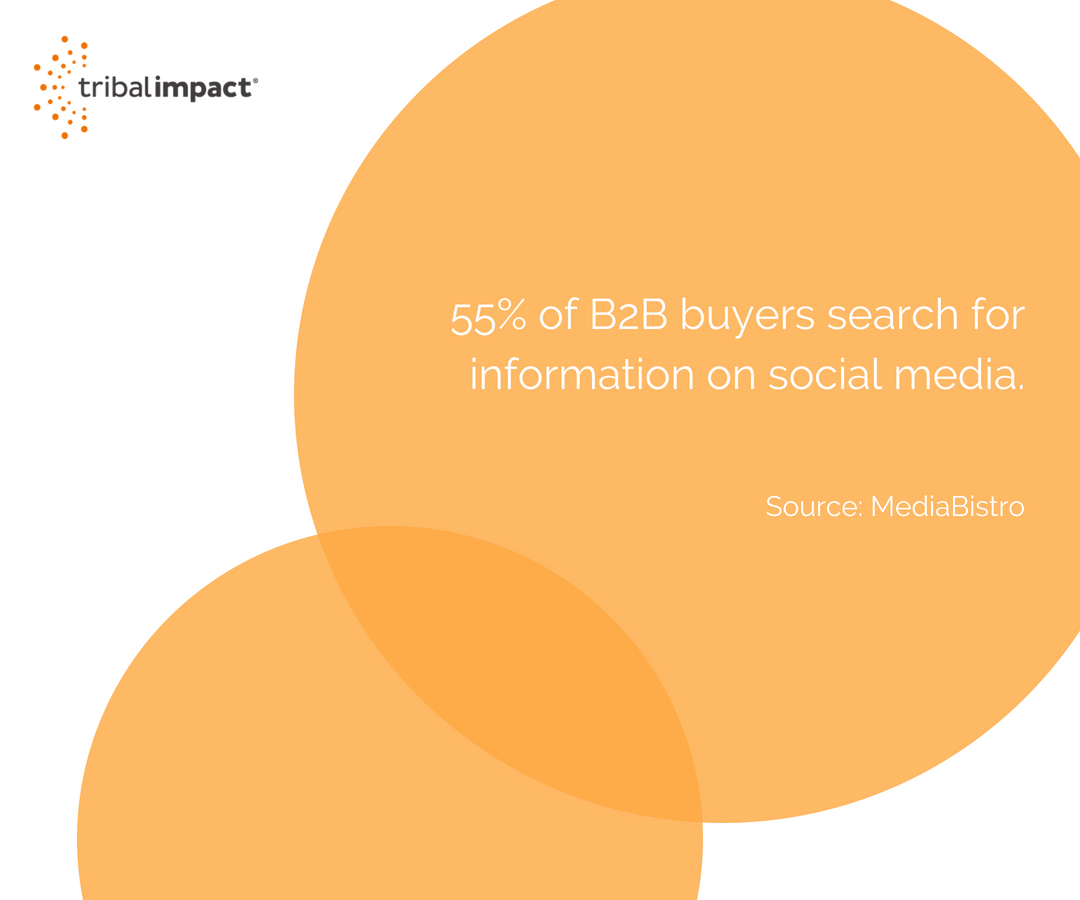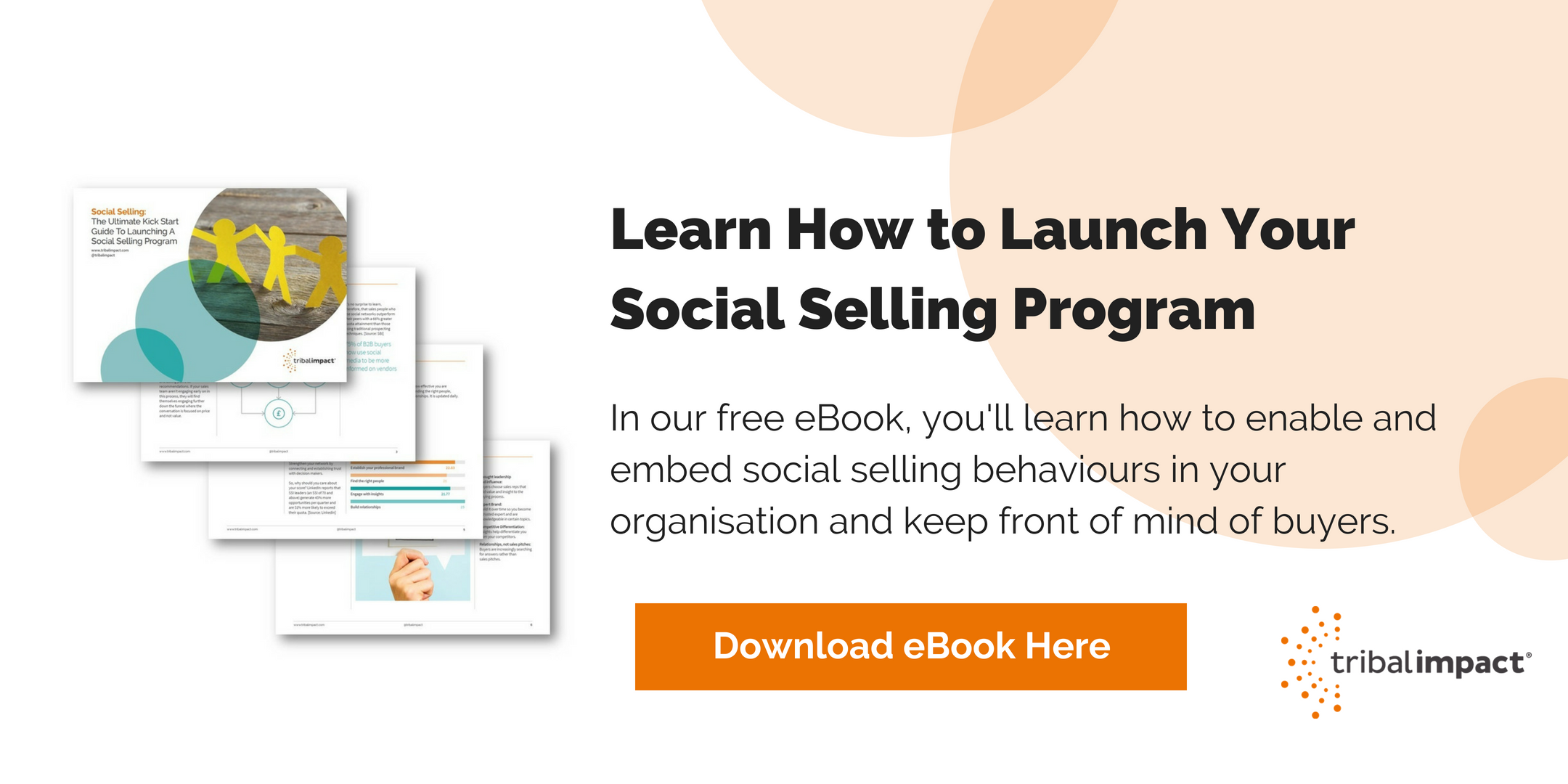This week we're delivering a set of Social Selling master classes to a social savvy sales audience at SAP, talking about how they can improve their inbound conversion using Twitter.
As one of the longest standing social networking platforms, Twitter hasn't been without it's ups and downs. However, it's recently rediscovered its niche as a news breaking, instant messaging and conversation-connecting platform. In fact, after almost 12 years, Twitter turned its first profitable quarter end of 2017.
LinkedIn Vs Twitter: Which Is Best For Social Selling?
Most B2B Social Selling journeys will start on LinkedIn - the number one business-focused social networking platform.
However, Social Selling is more than just LinkedIn. It's ultimately about the buyer's journey and wherever the buyer is, you need to be.
- 55% of B2B buyers search for information on social media (Source: MediaBistro)
- B2B buyers on social are more senior and make 61% more purchase decisions (Source: IDC)
- B2B Buyers are 26% more likely to use Twitter (Source: Global Web Index)
There is no competition between LinkedIn and Twitter. On the contrary, they're quite complementary.
Think of Twitter as a place for discovering people, listening and engaging to stay front of mind. Think of LinkedIn as the place for research and connecting to further the conversation.
Adapting Your Social Selling Practices To Include Twitter
These steps have been designed to take you from social zero to social hero on Twitter as a Social Seller.
1) Craft A Buyer Centric Twitter Profile
Creating a buyer-centric profile on Twitter is a little different to LinkedIn. There are no options for lengthy summaries so be concise but don't lose your personality.
- To start with, use a photo that is consistent with your LinkedIn profile
- Add a banner than says something to your customer about what you do
- Use #hashtags and @mentions in your bio summary
- Link to your LinkedIn profile so your prospect can learn more about you
2) Find, Follow & List Your Prospects, Customers & Competitors
6000 tweets are sent every second on Twitter. The average lifespan of a tweet is 18 minutes. It's noisy. Unless you know how to fight through the noise, you'll get frustrated. Make the effort to target your time efficiently in the long run.
- Use the "Find People You Know option and link Twitter up to your email account and identify those in your contact list who are already on Twitter
- Check the "Contact Info" on your prospect/customers LinkedIn profile. If they have a Twitter account it's most likely referenced here
- Use tools like Followerwonk by Moz to search bio @mentions so you can identify people who work for a specific account you're targeting
- Twitter search is now rather sophisticated. Type in keyword search terms and then click on "People" in the top menu.
Once you have found people you need to choose whether to Follow and/or List them.
Follow is when you add them to your Twitter network and their tweets show up in your main feed. Listing allows you to group people together and can be either public lists (that other people can see) or private lists (that only you see.
- When you follow someone on Twitter, they're notified.
- When you add them to a public list, they're notified. Ideal for grouping your colleagues or influencers you want to hear from
- When you add them to a private list, they're not notified. Ideal for grouping your customers, prospects and even competitors.

3) Listen For Triggers
According to Corporate Visions, 74% of buyers choose the sales rep that was first to add value & insight. If you're not the first, you might as well be the last.
Listening to your customers on Twitter allows you to engage and keep front-of-mind. It also shows you're interested in what they have to say. Listening to prospective customers gives you a competitive head start.
Use platforms like Hootsuite or Tweetdeck for time efficiency. These tools allow you to setup multiple streams on one window rather than flicking between apps:
- Set up a stream around keywords, keyword phrases and/or hashtags. Use Boolean queries (e.g. NOT, AND) to refine your search. It might look like this: Cloud OR "Digital Transformation" OR #IoT
- Set up a stream dedicated to one of your lists
- Set up a stream around buying triggers/signals. It might look something like: analytics ? geocode:49.4132,8.6552,100km4) Engage With Your Followers
- Set up a stream around event hashtags so you can monitor the conversation, identify potential prospects and start nurturing on Twitter
4) Engage With Your Followers
Now that you've established a network on Twitter, start listening and engaging with their content. Engagements on Twitter include replies, retweets and likes.
Start building a habit into your daily routine - whether in the coffee queue, lunch queue or train queue. We all have to queue at some point in our daily life so use that opportunity.
During this 10 minutes:
- Check your notifications tab along the top of Twitter. Thank those that follow you (if important to you), follow those that follow you and view tweets you've missed
- Check your Twitter news feed and retweet, reply and like 2 tweets each day. It's a start!
5) Share Consistently
If you're comfortable with engaging and conversing on Twitter, you may want to step into content sharing. Only go here when you're ready. You have to be consistent on Twitter, publishing regularly to make an influential impact.
- Use tools like Flipboard and Feedly to aggregate content from feeds
- Use tools like Hootsuite and Buffer to schedule content in advance so you free up your week days to focus on engagement
- Use automation tools like IFTTT cautiously. People are looking for authenticity and auto-publishing all the time without a 'human' voice will turn people off
The key to Social Selling on Twitter is that you don't have to do everything to make an impact. You have to do what's right and working for you and your role. Test your approach and tweak your routines. Find the rhythm that suits your daily habits and supports your business objective.

